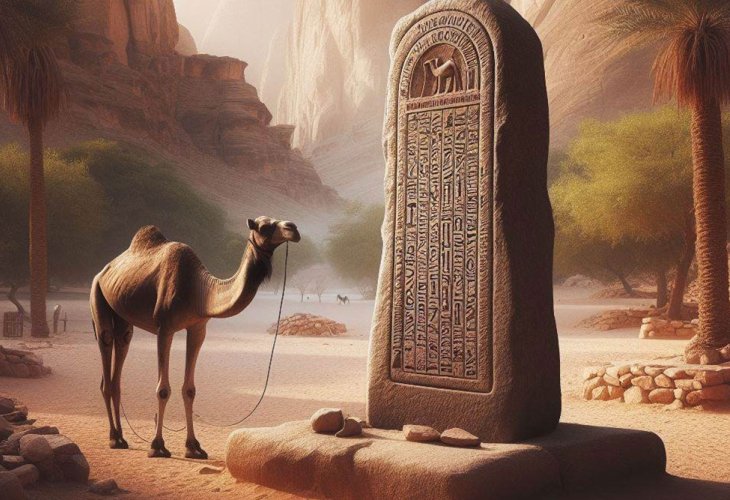Uncovering Pharaoh's Fate: A Tale from Sinai's Desert
What did an ancient inscription reveal about the fate of a Pharaoh, and how does this connect with stories in the Torah?

In 1865, a British traveler arrived in the small town of El-Arish, located in the Sinai Desert, en route to Egypt. Looking for a place to rest, he stumbled upon a fascinating discovery. As the sun was setting, he observed locals pouring water from jugs into a large, square trough situated in one of the courtyards. To his surprise, he realized it was an upside-down monolith, typically used in ancient times for temple or city square dedications. The traveler noticed the trough's four walls were densely covered with inscriptions.
Upon reaching Cairo, the traveler shared his curious find with British scholars in the city. One of them remembered the account, and about two decades later, the inscription was copied and sent to a researcher named Griffin for deciphering. The text was first published in 1890 by a scholar named Neville. Initially, the translation was obscure, but with advances in Egyptology, the renowned Alan Gardiner offered a clearer interpretation.
The text, attributed to the El Arish inscription, is complex, with large parts still unclear. However, the deciphered sections suggest it recounts events from the time of King Thom. It describes severe distress across the land: "A great calamity befell the earth... A tremendous upheaval struck the palace... For nine days, no one left the palace, and during these nine days of natural chaos, a storm raged so fiercely that neither humans nor gods could see their neighbor's face nearby... When His Majesty Ra-Harmachis battled the evildoers at this place called 'the Place of Whirlpools,' the evildoers did not prevail against His Majesty. His Majesty leapt into a place named 'the Place of Whirlpools'... His Excellency met his end at a location called Pi-Haroti, thrust with great force by the whirlpool skywards... he did not survive."
The name Pi-Haroti echoes the biblical account of the crossing of the Red Sea at "Pi-Hahiroth." (The translator may have overlooked this, as the English translation of the Torah generally doesn't convey the Hebrew letter 'ח'. Therefore, they might read it as "Mouth of the Hireoth," not realizing the original Hebrew "Pi, meaning "mouth of," closely aligns with the Egyptian "Pi-Haroti.")
Given the clear reference to the Red Sea crossing, there's also a strong connection to Pharaoh's fate, depicted as being "thrust with great force by the whirlpool," akin to the biblical phrase "horse and rider he has thrown into the sea." This also strongly resembles the description of the Plague of Darkness (it's likely the Egyptian author exaggerated the duration, or Egyptians remained indoors out of fear even after it ended). Later, Pharaoh's son is depicted searching through the desert for his father, gathering rumors of his fate. Pharaoh's son, too, meets calamity through a mysterious fire (possibly the pillar of fire?).
It is worth mentioning that the Israelites built "Pithom," which in Egyptian means "the House of Thom," suggesting a link between the name "Thom" and the Egyptian king mentioned in this inscription.
Thus, the ancient Egyptian inscription had the fortune of remaining in "El-Arish," potentially the biblical "Succoth," one of the Israelites' first stops on their journey, for over two millennia.

